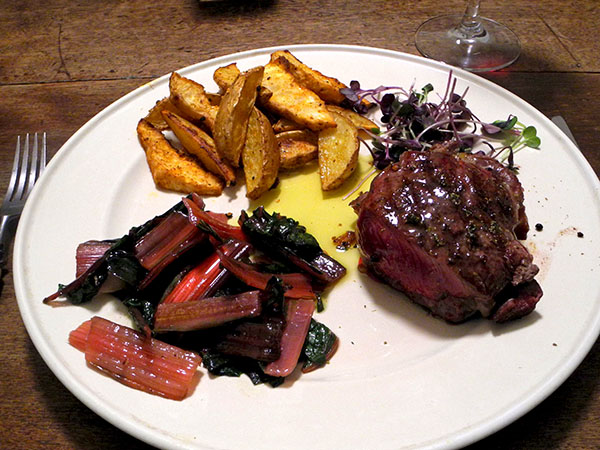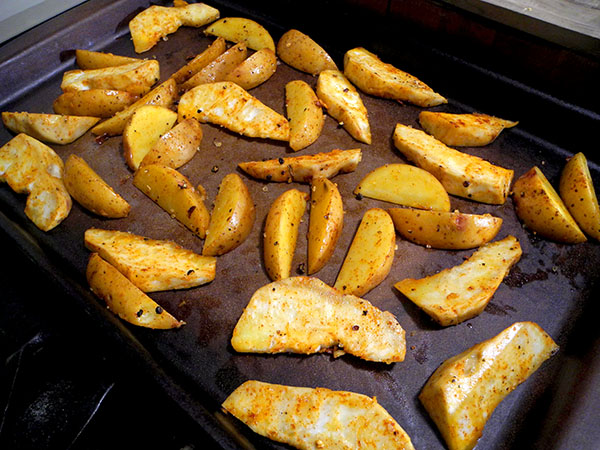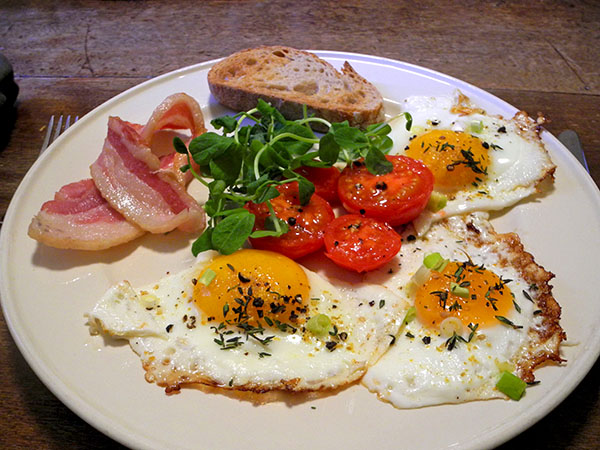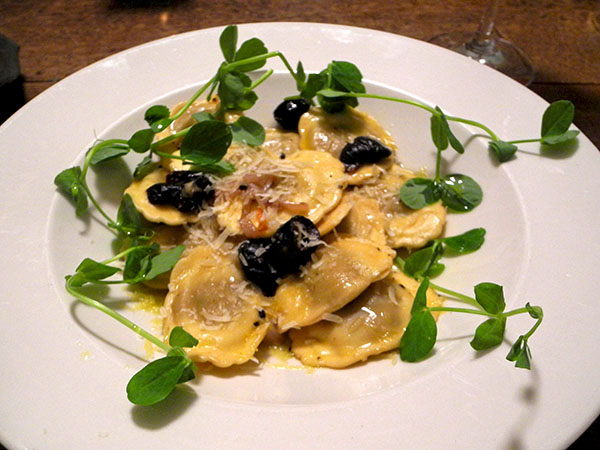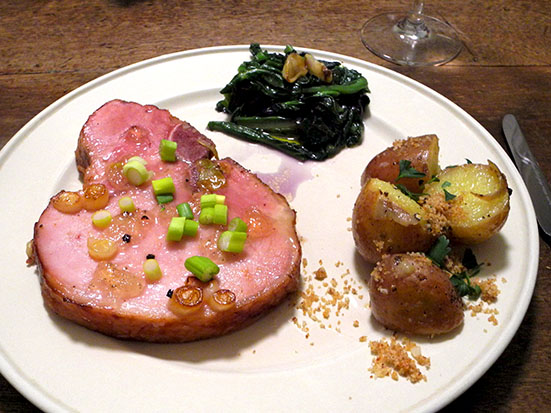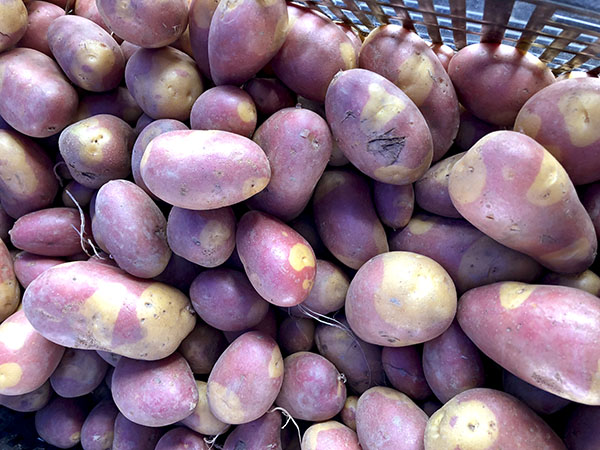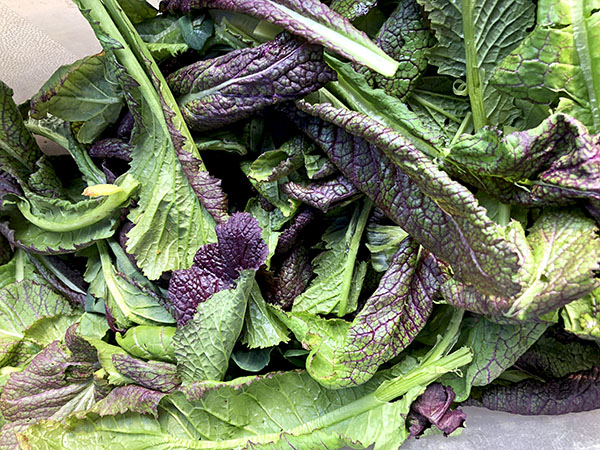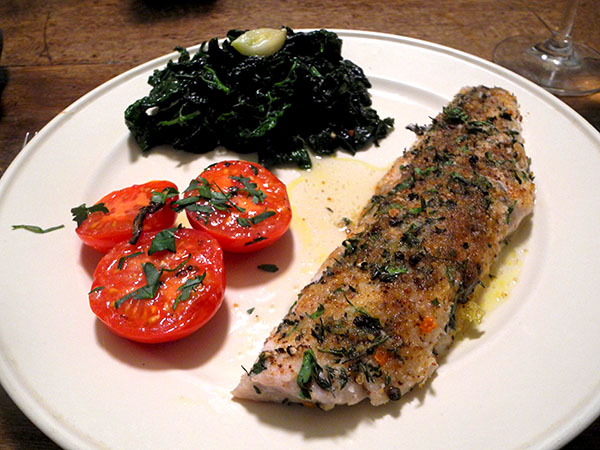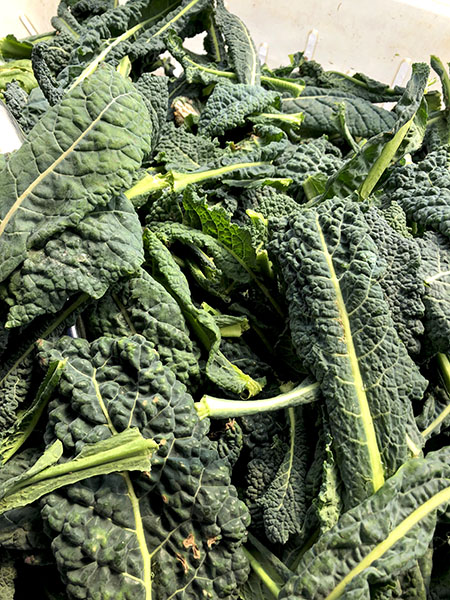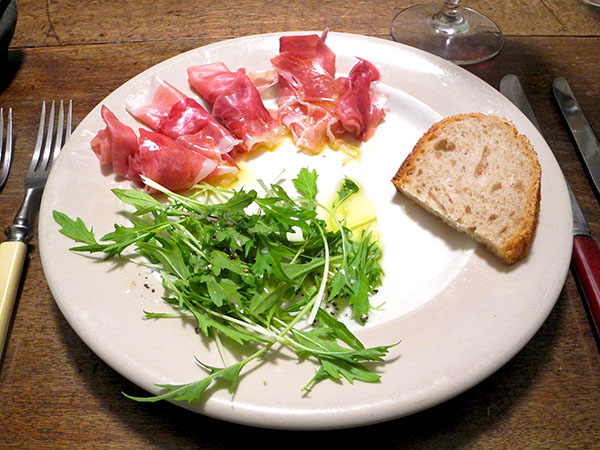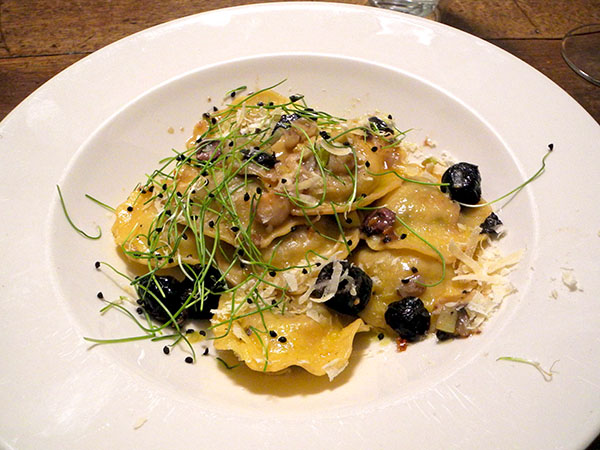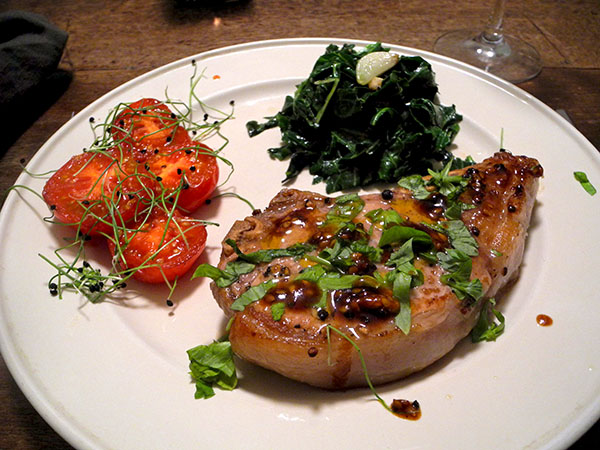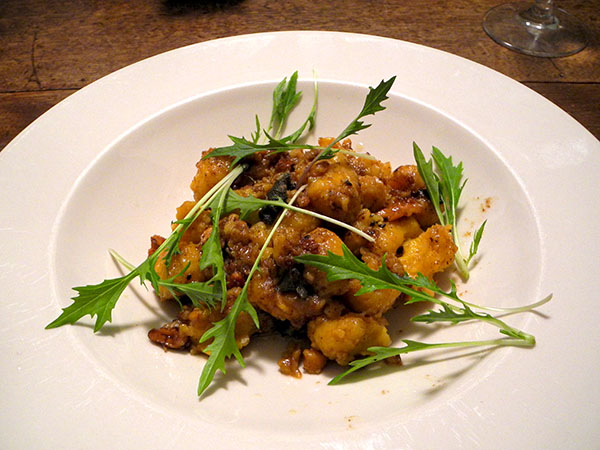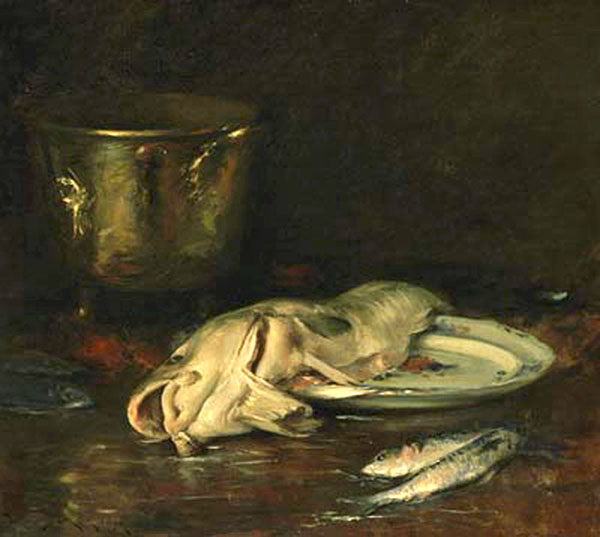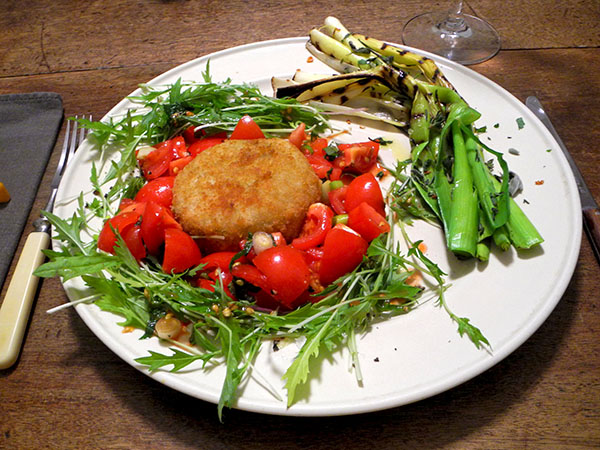
These crab cakes never fail to please, and last night they also looked pretty spectacular.
When I think about preparing crab cakes, specifically the ones made by Dolores, the wife of local fisherman Phil Karlin, of P.E. & D.D. Seafood, I often forget just how delicious they are. That changes each time, with the first bite.
On Wednesday evening, there was an additional treat, some New Jersey leeks, which I served grilled.

- two crab cakes from PE & DD Seafood (crab, egg, flour, red & green peppers, garlic, salt, pepper, breadcrumbs, mayonnaise, milk, celery, and parsley), defrosted earlier in the day, heated with a drizzle of olive oil inside a heavy vintage seasoned cast iron pan, 3 to 4 minutes to each side, served on a salsa composed of 8 or so chopped Backyard Farms Maine ‘cocktail tomatoes’ from Whole Foods, sea salt, freshly-ground black pepper, a bit of a bit of a homemade Basque piment d’Espellate we had purchased in a small town north of Baie-Comeau, Quebec from the French producer’s daughter, the chopped white section of a scallion from Phillips Farms, much of one small dried pepperoncino Calabresi secchi from Buon Italia, and some chopped mint from Windfall Farms
- a wreath of baby mizuna from Norwich Meadows Farm, arranged around the salsa, dressed with Portuguese olive oil from Whole Foods Market, sea salt, and freshly-ground black pepper
- four medium leeks from Phillips Farm, trimmed of their darkest green ends sections, cut in half lengthwise, washed vigorously in cold water to remove any earth while carefully holding the white ends together to keep them from falling apart (this could have been done more easily by cutting only part of the way down through their length), dried, rolled in a little olive oil, sea salt, freshly ground black pepper, and a tiny bit of dried darker golden habanada pepper, pan-grilled over a medium-hot flame for a few minutes, turning until all sides had been scored with grill marks and the leeks softened all the way through, returned to the platter in which they had rolled before grilling and sprinkled with more of the habanada, arranged on the plates, arranged on the plates and sprinkled with a mix of chopped herbs (parsley from Eataly and rosemary, thyme, and sage from Citarella)
- the wine was an Italian (Campania) white, Greco ‘Giano’, Ocone 2016, from Astor Wines
- the music was Jordi Savall’s album, ‘The Borgia Dynasty: Church and Power in the Renaissance’,
with Jordi Savall, Montserrat Figueras, La Capella Reial de Catalunya, and Hespèrion XXI, produced by Alia Vox [a sample here]
